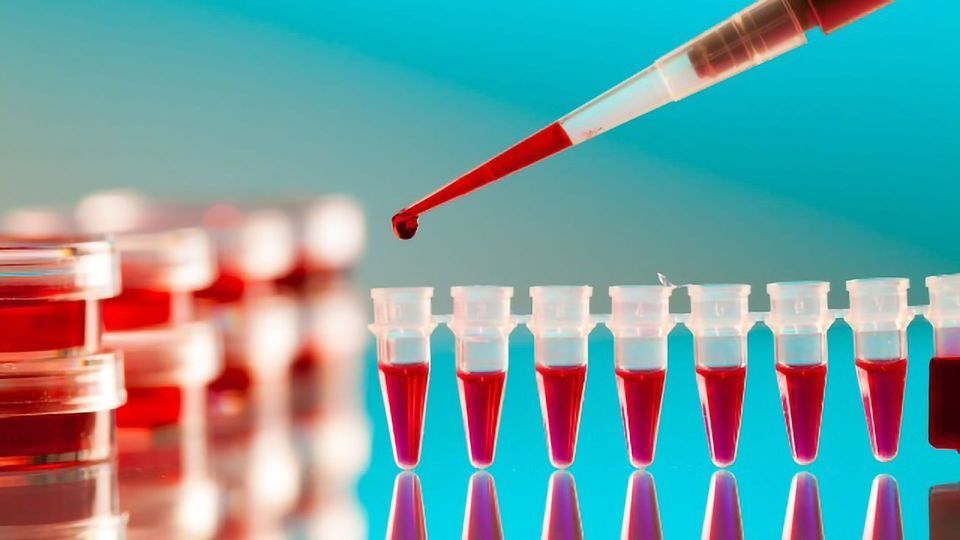
A blood test is a laboratory analysis performed on a blood sample that is usually extracted from a vein in the arm using a hypodermic needle, or via fingerprick. Multiple tests for specific blood components, such as a glucose test or a cholesterol test, are often grouped together into one test panel called a blood panel or blood work. Blood tests are often used in health care to determine physiological and biochemical states, such as disease, mineral content, pharmaceutical drug effectiveness, and organ function. Typical clinical blood panels include a basic metabolic panel or a complete blood count. Blood tests are also used in drug tests to detect drug abuse.
Biochemical analysiseditA basic metabolic panel measures sodium, potassium, chloride, bicarbonate, blood urea nitrogen (BUN), magnesium, creatinine, glucose, and sometimes calcium. Tests that focus on cholesterol levels can determine LDL and HDL cholesterol levels, as well as triglyceride levels.Some tests, such as those that measure glucose or a lipid profile, require fastin(or no food consumption) eight to twelve hours prior to the drawing of the blood sample.For the majority of tests, blood is usually obtained from the patient's vein. Other specialized tests, such as the arterial blood gas test, require blood extracted from an artery. Blood gas analysis of arterial blood is primarily used to monitor carbon dioxide and oxygen levels related to pulmonary function, but is also used to measure blood pH and bicarbonate levels for certain metabolic conditions.While the regular glucose test is taken at a certain point in time, the glucose tolerance test involves repeated testing to determine the rate at which glucose is processed by the body.Blood tests are also used to identify autoimmune diseases and Immunoglobulin E-mediated food allergies (see also Radioallergosorbent test).
Molecular profileseditProtein electrophoresis (general technique—not a specific test)Western blot (general technique—not a specific test)Liver function testsPolymerase chain reaction (DNA). DNA profiling is today possible with even very small quantities of blood: this is commonly used in forensic science, but is now also part of the diagnostic process of many disorders.Northern blot (RNA)Sexually transmitted diseasesCellular evaluationeditFull blood count (or "Complete Blood Count")HematocritMCV ("Mean Corpuscular Volume")Mean corpuscular hemoglobin concentration (MCHC)Erythrocyte sedimentation rate (ESR)Cross-matching. Determination of blood type for blood transfusion or transplantsBlood cultures are commonly taken if infection is suspected. Positive cultures and resulting sensitivity results are often useful in guiding medical treatment.(wikipedia)

Optimists Health & wellness website India's innovative health, fitness and wellness platformOptimists Health & wellness website India's innovative health, fitness and wellness platformIn today’s day and age, it’s highly likely that you can figure out the kind of disease, infections, ailments, and deficiencies you have through a simple blood test. And although the use of blood tests may seem only like a necessity to us in times of sickness, the blood tests that we have today are so advanced, they are nothing short of a medical marvel. However, things weren’t always this way—this form of examination didn’t exist well until the 19th century. We have come a long way since then, so let’s take a look at the evolution of blood tests. It began with blood types…Karl Landsteiner and his colleagues were the first people to uncover a breakthrough discovery— the different blood types to exist within the human body. This happened in 1901 when the blood types were recognized as A, B, AB, and C (which we now know as O). Landsteiner was also the person to discover that blood has an Rh factor (Rh factor is an antigen present in red blood cells). History notes that both his researches became universally accepted and he was awarded the Nobel Peace Prize for his efforts. Disease testing Between the 1930s-1940s, disease testing became the next big thing in the world of scientific discovery. Only this time, you could identify diseases through blood testing. Although today we can check an array of diseases through a small vial of blood, back then, syphilis and rubella were the only common tested diseases. Advancements in testing The world of blood tests began to advance and scientists began to screen all donated blood for signs of Hepatitis B and HIV. If we were to go back in time, we would recognize that the first test for Hepatitis B was introduced in 1971 and the first test for HIV was conducted in 1985. In 2021Today, you can track the most basic as well as complex diseases with the help of blood tests. Technology has advanced in such a manner that you can even follow the evolution of diseases. And although it is entirely possible to identify a limitless amount of diseases with the help of blood tests, hospitals around the globe only screen donated blood for around 10 major diseases.Many parts around the globe are yet accustomed with traditional methods of using needles to draw vials of blood which is then lab tested for diseases (this technique is known as Venipuncture). However, with new advancements in this field, you can even get the same accuracy with a finger prick test (one of the most minimally invasive procedures out there that takes up to 30x less blood). So we can all thank the modern world for no uncomfortable hospital visits, scary needles, and loss of vials of blood. If this sounds like something that interests you, get in touch with us at Optimists, India’s first preventative health test service that uses finger prick technology allowing you to do these tests on yourself from the comfort of your home! Click here for more information(https://optimists.in/health-hub/evolution-of-blood-tests/ )
In the Bible it was written thousands of years before...
" For the life of the flesh is in the blood" -Leviticus 17:11